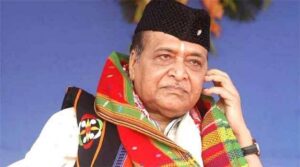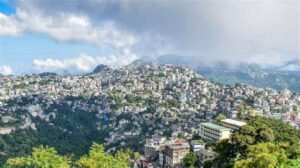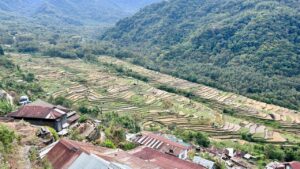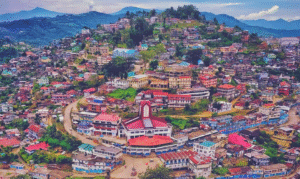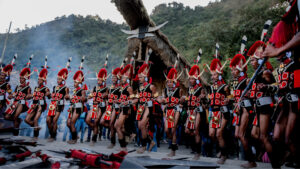Introduction
The Kang Festival, also known as the Ratha Yatra of Manipur, is a prominent religious festival celebrated by the Meitei community of Manipur. It marks the annual chariot procession of Lord Jagannath, closely resembling the famous Ratha Yatra of Puri, Odisha. This festival showcases the rich cultural heritage of Manipur and reflects the community’s devotion to Lord Jagannath.
The Kang Festival is not just a religious celebration; it is a cultural event that unites people from various backgrounds. It promotes values of devotion, unity, and cultural pride.
Historical Roots
The origins of the Kang Festival in Manipur date back to the 18th century when Hinduism, particularly the Vaishnavite tradition, gained prominence in the region. King Garib Niwaj, who embraced Vaishnavism, played a crucial role in popularizing the festival.
Over the centuries, the Kang Festival has evolved but continues to retain its religious and cultural significance. It serves as a testament to the region’s deep-rooted faith and the influence of Vaishnavism.
Language and Communication
The festival provides an opportunity for the use of the Meitei language in religious hymns, chants, and traditional songs. Manipuri, the official language of Manipur, plays a vital role in preserving and promoting the cultural identity of the community.
The exchange of religious and cultural knowledge through storytelling and verbal communication is an essential part of the Kang Festival.
Festivals and Celebrations
The Kang Festival is celebrated with great enthusiasm over ten days, usually in the month of July. The highlight of the festival is the grand procession of Lord Jagannath’s chariot, which is pulled by devotees along the streets of Imphal and other parts of Manipur.
Traditional dances, music, and performances accompany the procession, creating a vibrant and spiritual atmosphere. Devotees participate in rituals, prayers, and community feasts throughout the festival.
Arts, Crafts, and Music
The festival offers a platform to showcase traditional Manipuri arts, crafts, and music. Colorful decorations, handcrafted chariots, and intricate textiles reflect the artistic heritage of Manipur.
Music and dance performances, including the Manipuri classical dance style, add grandeur to the festival. Artistic expressions during the festival highlight the community’s creativity and devotion.
Cuisine and Culinary Traditions
Food plays an important role during the Kang Festival. Devotees prepare and share traditional Manipuri dishes such as Eromba, Chak-hao kheer, and Singju. Offering food to the deities and distributing it as prasad is a common practice.
The culinary traditions associated with the festival help preserve ancient recipes and cooking techniques passed down through generations.
Attire and Ornamentation
During the Kang Festival, people wear traditional attire, including Phanek and Innaphi for women and Dhoti and Kurta for men. These garments showcase the rich textile heritage of Manipur.
Ornaments and accessories worn during the festival are often handcrafted, highlighting the community’s skill in jewelry making.
Beliefs and Values
The Kang Festival embodies values of devotion, humility, and service. Pulling the chariot is considered a sacred act, symbolizing unity and selflessness. The festival also promotes communal harmony and social cohesion.
It reflects the community’s belief in preserving religious traditions and cultural practices.
Customs and Etiquette
Specific customs and etiquette are observed during the Kang Festival. Rituals are performed with strict adherence to tradition. Devotees show respect to the deities through prayers, offerings, and acts of service.
Hospitality is a significant aspect of the festival, with families welcoming guests and sharing food.
Architecture and Symbols
The chariot used during the procession is a significant architectural symbol. It is intricately designed and constructed, representing the cultural and religious craftsmanship of Manipur.
Traditional houses and temples where rituals are performed also reflect the architectural style unique to the region.
Oral Traditions and Storytelling
Storytelling is an essential part of the Kang Festival. Elders share tales of the festival’s origins and religious significance with younger generations. This oral tradition helps preserve the community’s history and cultural knowledge.
Religious hymns and chants sung during the festival further strengthen the cultural and spiritual identity of the community.
Interactions with Nature
The Kang Festival is closely connected to nature, as it often involves rituals performed outdoors. Flowers, fruits, and other natural elements are used in offerings and decorations.
The festival highlights the community’s reverence for nature and its role in religious practices.
Challenges and Preservation
The Kang Festival faces challenges from modernization and changing social dynamics. However, efforts are being made to preserve the festival through cultural organizations and community initiatives.
The promotion of traditional arts, crafts, and rituals associated with the festival helps keep it alive and relevant in modern times.
Contributions to the Broader Region and World
The Kang Festival has contributed to the cultural richness of Northeast India. Its unique traditions and artistic expressions have attracted attention from scholars and cultural enthusiasts worldwide.
The festival’s emphasis on devotion, unity, and cultural pride serves as an inspiration for communities beyond Manipur.
Conclusion
The Kang Festival is not only significant to Manipur but also resonates with the broader cultural fabric of Northeast India. It reflects the region’s diverse heritage and religious practices.
By promoting cultural unity and pride, the Kang Festival strengthens the identity of Northeast India as a vibrant and culturally rich part of the country.
